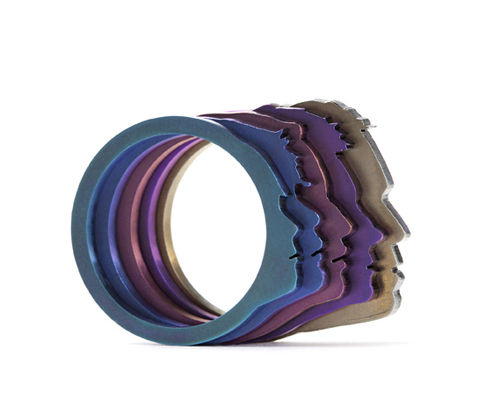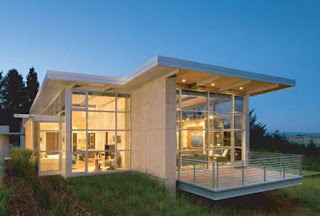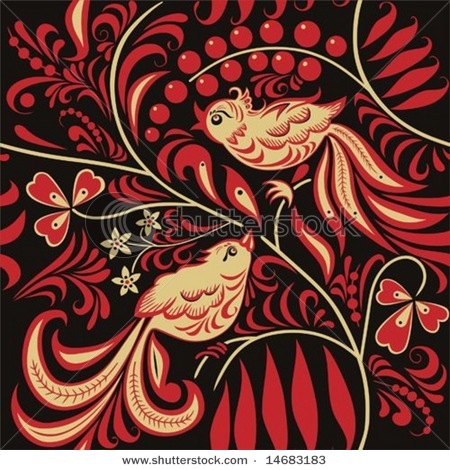Sunday, May 13, 2012
Wednesday, May 9, 2012
Tuesday, April 17, 2012
Sunday, April 8, 2012
Hollow Form Sketches
The design is based on a Swedish fabric. The front plate would be etched and pierced.
The design is based on a bright yellow slime mold. The cavity would be filled with resin or another substance.
Hollow Form Research: Artists
Marina Sheetikoff
Marina Sheetikoff
Ring: Profile 2012
Nióbium
1x2.5 cm
Photo by Fernando Laszlo
Could be hollow-formed, but more likely cast?
Marina Sheetikoff
Head Piece: Ramo 2009
Silver
22x17x12 cm
Photo by Henk Nieman
These appear just to be pierced, but hollow form branch forms could make a beautiful brooch.
Marina Sheetikoff
Armband: Still life 2 2012
Silver, leaf
15x4x18 cm
Photo by Fernando Laszlo
Marina Sheetikoff
Ring: Profile 2012
Nióbium
1x2.5 cm
Photo by Fernando Laszlo
Could be hollow-formed, but more likely cast?
Head Piece: Ramo 2009
Silver
22x17x12 cm
Photo by Henk Nieman
These appear just to be pierced, but hollow form branch forms could make a beautiful brooch.
Marina Sheetikoff
Armband: Still life 2 2012
Silver, leaf
15x4x18 cm
Photo by Fernando Laszlo
Shape of band could be used for a ring.
Paula Lindblom
I love the idea of using hollow form technique to make a weird little diorama.
Hollow Form Historical Research
furniture- Rococo
furniture- Minimalist
furniture- Baroque
furniture- Cubist
jewelry- Rococo
jewelry- Cubist
jewelry- Art Nouveau
jewelry- Art Nouveau
jewelry- Neoclassical
architecture- Gothic
architecture- Art Deco
architecture- Art Deco
architecture- Minimalist
architecture- Baroque
furniture- Minimalist
furniture- Baroque
furniture- Neoclassical
jewelry- Rococo
jewelry- Cubist
jewelry- Art Nouveau
jewelry- Art Nouveau
jewelry- Neoclassical
architecture- Gothic
architecture- Art Deco
architecture- Art Deco
architecture- Minimalist
architecture- Baroque
Sunday, March 11, 2012
Project Two: Creative Caffeine
Hanna Hedman
Heejin Hwang
Julia Reytan
Lina Peterson
From what I can see, the above necklace makes use of flanges and tabs to create a nontraditional chain to suspend the pendant. I think the "chain" complements the pendant portion perfectly because it retains the bulkiness of the bird and the same finishing.
The suspension method of this neckpiece is really interesting. The fringed material evokes all sorts of associations, from tree branches to tinsel. I also found it interesting that the artist chose to include a clasp even though it is glaringly unnecessary. I think the clasp makes this piece read more clearly as a necklace, which is perhaps why the artist included it.
Silke Spitzer
These necklaces don't have a pendant portion, but I think the would-be suspension method creates an interesting aesthetic. It looks like wood wrapped in rubber or cloth, and it's simplicity is surprisingly visually interesting.
The use of strung beads as an alternative to a chain is not exactly innovative, but I think this artist uses beads in such a way that it doesn't appear stuffy or kitschy. The variation of size and colors helps a lot, as does the use of the untraditional element of what appears to be a lanyard material. While they don't appear to be metal, I think these necklaces show a fun crossover aesthetic that could easily be considered both wearable fashion jewelry or art.
I love the intertwined use of metal and fiber in this piece. Rather than just having the two elements attached to each other, the artist has made it appear as if she has actually stitched metal together. I love fiber and textiles, so I could definitely see using similar techniques in my necklace, perhaps as a method of attachment.
Subscribe to:
Comments (Atom)






















































